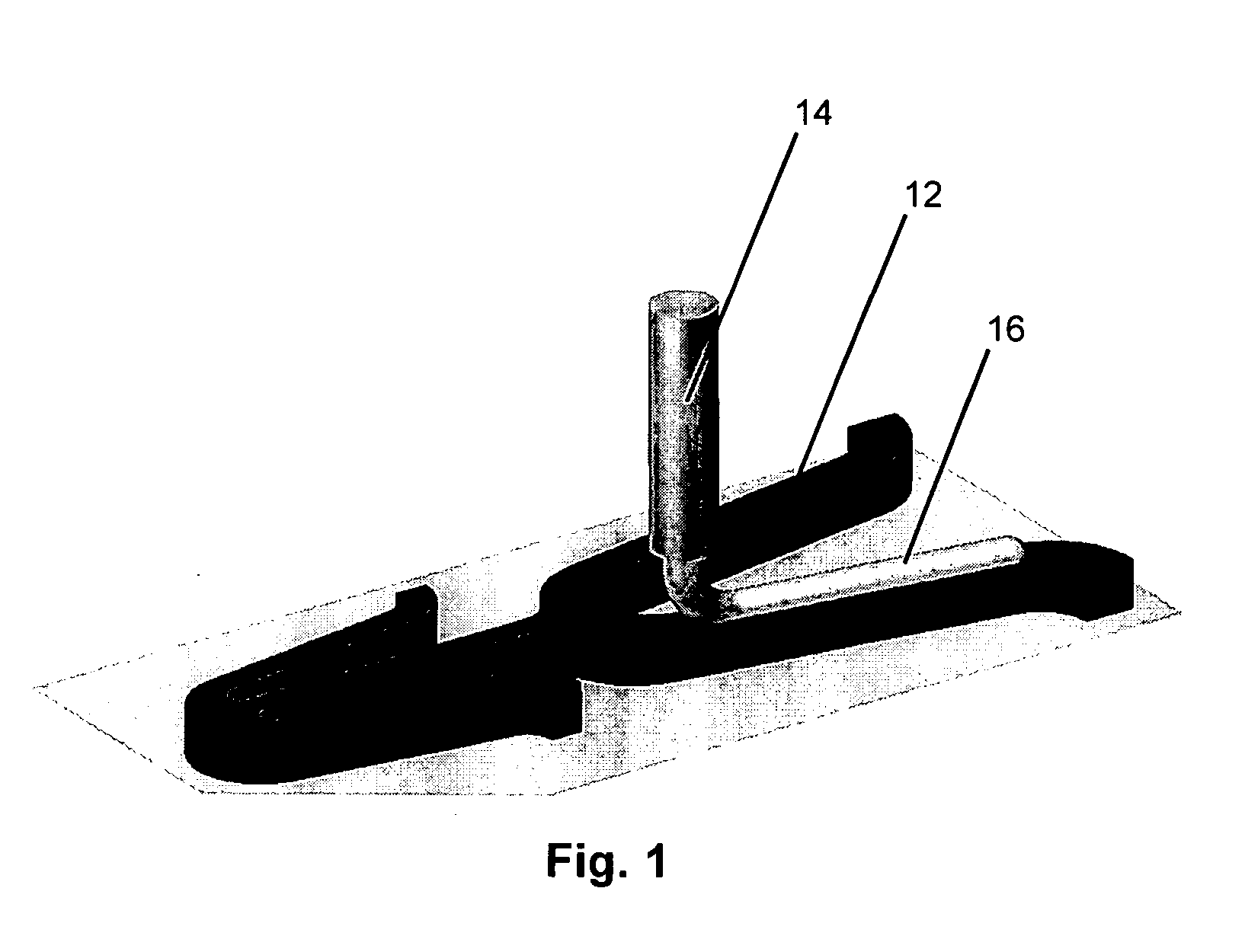Processes for producing polymer coatings for release of therapeutic agent
a technology of therapeutic agents and coatings, which is applied in the field of medical devices with polymer coatings, can solve the problems of expensive therapeutic agents, direct coating of the surface of metallic medical devices, for example, stents, with aqueous solution, etc., and achieves the effect of minimizing pooling or beading of solution and effective wetting
- Summary
- Abstract
- Description
- Claims
- Application Information
AI Technical Summary
Benefits of technology
Problems solved by technology
Method used
Image
Examples
example
[0048] In this example, a cross-linking agent is applied to the surface of a stent. The therapeutic is then delivered to the stent surface within a polymer solution. When the polymer solution contacts the cross-linking agent on the surface of the stent, the polymer forms a gel, and the therapeutic is held in a crosslinked matrix on the surface of the stent.
[0049] The following materials are used: (a) 2.5% (w / w) sodium alginate polymer solution (aqueous), (b) 1.0% (w / w) calcium chloride solution (aqueous), (c) Boston Scientific Express™ 8 mm coronary stent, Boston Scientific, Natick Mass., USA, (d) 26 gauge hypodermic needle w / syringe, (e) stereoscopic light microscope, (f) stent spray coater, and (g) Teflon-coated mandrels.
[0050] Stents are initially spray coated with the CaCl2 solution and allowed to dry for 3 hours at 37° C. Sodium Alginate solution is then loaded into hypodermic syringe using care to eliminate any bubbles in the syringe. Dried stents are loaded onto mandrels, ...
PUM
| Property | Measurement | Unit |
|---|---|---|
| temperatures | aaaaa | aaaaa |
| time | aaaaa | aaaaa |
| covalent | aaaaa | aaaaa |
Abstract
Description
Claims
Application Information
 Login to View More
Login to View More - R&D
- Intellectual Property
- Life Sciences
- Materials
- Tech Scout
- Unparalleled Data Quality
- Higher Quality Content
- 60% Fewer Hallucinations
Browse by: Latest US Patents, China's latest patents, Technical Efficacy Thesaurus, Application Domain, Technology Topic, Popular Technical Reports.
© 2025 PatSnap. All rights reserved.Legal|Privacy policy|Modern Slavery Act Transparency Statement|Sitemap|About US| Contact US: help@patsnap.com

